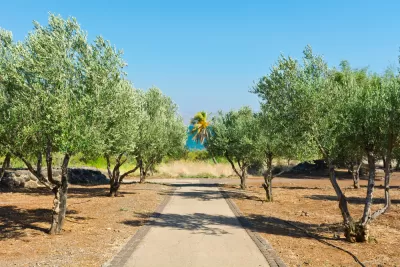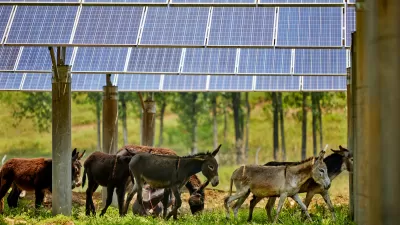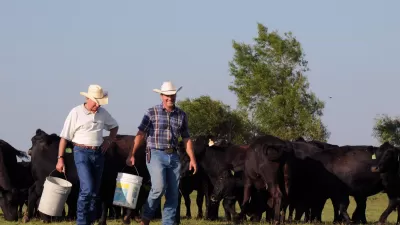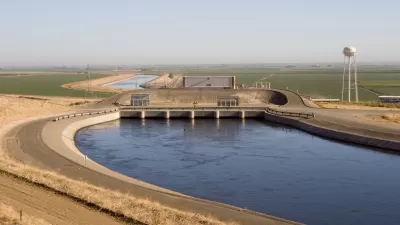The Farm Bill is one of the federal government's biggest, most controversial (yet still intractable) bills. The Trump Administration has plans for change.

"The Trump administration wants to slash the federal government’s biggest source of funds for conservation on private land," reports Eilís O'Neill.
Those cuts would come from the Farm Bill, which was most recently updated in 2014. According to O'Neill, "[t]he Trump administration is proposing cutting 22 percent, or $1.3 billion per year, out of the Farm Bill’s conservation budget."
As explained by O'Neill, the conservation budget traditionally included in the Farm Bill is a persistent source of controversy. Critics say the Farm Bill's funding formula pays farmers to do what they would be doing anyway—not farming their least productive land. To counter that point, O'Neill cites Erik Lichtenberg, a professor of agriculture economics at the University of Maryland who has studied the issue. "He says, though estimates vary, it’s pretty certain Farm Bill programs do lead to farmers conserving land they would otherwise farm."
Despite that endorsement, Lichtenberg says the Farm Bill is in need of reform—to shift conservation funding toward verifiable environmental benefit. The cuts proposed by the Trump Administration would not achieve those effects, however.
The administration proposes saving money by capping rental payments and excluding farmers who make more than $500,000 per year from the programs.
That makes the programs “more like income support for farmers than paying for environmental improvements,” Lichtenberg says.
FULL STORY: 6 things to know about conservation and the Farm Bill

Montreal Mall to Become 6,000 Housing Units
Place Versailles will be transformed into a mixed-use complex over the next 25 years.

Planetizen Federal Action Tracker
A weekly monitor of how Trump’s orders and actions are impacting planners and planning in America.

DARTSpace Platform Streamlines Dallas TOD Application Process
The Dallas transit agency hopes a shorter permitting timeline will boost transit-oriented development around rail stations.

Interactive Map Reveals America's “Shade Deserts”
Launched by UCLA and American Forests to combat heat-related deaths, the tool maps the shade infrastructure for over 360 U.S. cities.

Bicycles and Books — In Sacramento, Libraries Now Offer Both
Adult library card holders can check out e-bikes and e-trikes for up to one week.

Colorado Landfills Emit as Much Pollution as 1M Cars
Landfills are the third-largest source of methane pollution in Colorado, after agriculture and fossil fuel extraction.
Urban Design for Planners 1: Software Tools
This six-course series explores essential urban design concepts using open source software and equips planners with the tools they need to participate fully in the urban design process.
Planning for Universal Design
Learn the tools for implementing Universal Design in planning regulations.
City of Mt Shasta
City of Camden Redevelopment Agency
City of Astoria
Transportation Research & Education Center (TREC) at Portland State University
US High Speed Rail Association
City of Camden Redevelopment Agency
Municipality of Princeton (NJ)





























